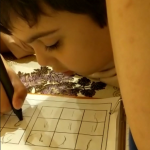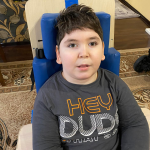Why Do Autistic Children Need Headphones?
Many people wonder why autistic individuals wear headphones. It’s important to note that this doesn’t apply to all children with autism, but rather to some of them. The reason for this is heightened sensory sensitivity. Autistic children often experience increased sensitivity to various sensory stimuli, such as sounds, smells, light, taste, and texture.
What Is Sensory Sensitivity and How Does It Manifest in Children with Autism?
Different children react differently to various stimuli. Among autistic individuals, two extremes are commonly seen:
- Hypersensitivity: The child may experience discomfort or even pain from bright lights or loud noises that seem normal to others.
- Hyposensitivity: In this case, an autistic child may not notice pain signals or may not respond to certain textures, which can lead to injuries or other issues.
How Sensory Sensitivity Affects Daily Life
Sensory sensitivity in autism is a condition in which a person experiences heightened or diminished sensitivity to various sensory stimuli, such as sound, light, textures, smells, and taste.
Some autistic children may be very sensitive to loud noises or bright lights, which causes discomfort or anxiety. Others, on the other hand, may not notice pain or may seek out intense sensory experiences. This can lead to unusual reactions to the world around them and affect behavior and daily life. Understanding these differences is important for creating a comfortable environment for autistic individuals.
How to Overcome Heightened Sensory Sensitivity in Autism and ASD
- Creating a Comfortable Environment:
Regulate lighting – use soft lighting or special lamps to reduce brightness.
Soundproofing – use headphones or earplugs in noisy environments.
Use tactile materials in daily life to help with sensory regulation. - Planning the Day:
Creating a predictable routine can reduce stress and help manage sensory overload. Include time for breaks to recharge after stressful situations. - Effective Communication:
Explain sensory discomforts to the child and help them understand what is bothering them. Establish signals that the child can use to communicate their needs. - Sensory Therapy:
Teach the child relaxation techniques, such as breathing exercises or meditation. - Use of Special Tools:
Use toys or objects that help the child calm down or distract them from overwhelming sensory input.
Sensory Sensitivity Correction in ASD with Stem Cell Therapy
The Mardaleishvili Medical Center in Georgia performs stem cell therapy for children with autism, starting at the age of 4, aimed at correcting autism spectrum disorders. Stem cells have a powerful potential to restore damaged areas of the brain. As a result, children experience significant improvements in cognitive development, socialization, communication, and overcoming excessive sensory sensitivity.
A cumulative effect is observed within a year after the procedure, and over time, children who undergo stem cell therapy have the chance to significantly improve their quality of life, pursue education, and find their place in society.
How to Achieve the Best Results in Autism Correction? Ask the specialists at the Mardaleishvili Center
Autism Treatment Center Videos
Autism treatment with own stem cells
Cord blood association congress
International Quality Crown
Autism Treatment Reviews
Autism treatment with own stem cells
The story of Alessandro (6 years old)
Autism Patient Testimonial - Stem Cell Treatment
Clients Testimonials

Feedback from Igor, David’s father (12 years old) Read More

Feedback from Olga, Fedya’s mother Read More

Feedback from Natalia, Radomir’s mother (15 years old) Read More

Feedback from Esther, Samuel’s mother (8 years old) Read More

Feedback from Abibe, Selim’s mother (7 years old) Read More












